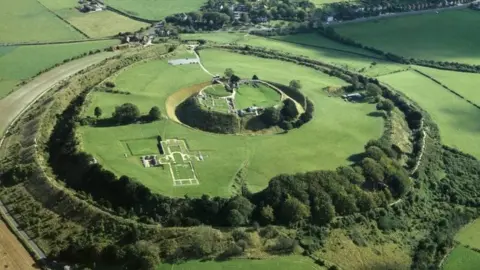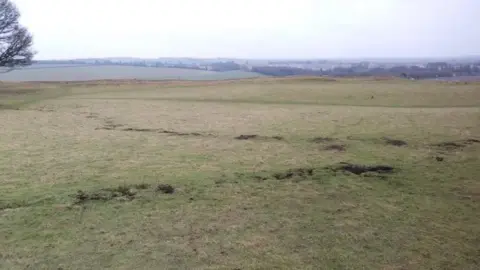English Heritage urges end to illegal metal detecting at historic sites
 PA Media
PA MediaEnglish Heritage has urged the public to help fight the rise of illegal metal detecting at its historic sites.
Ancient locations such as the site of the Battle of Hastings and Old Sarum in Wiltshire have been targeted by illegal detecting, the organisation said.
The conservation body said such action, known as "nighthawking", was "robbing us of our past".
There were more than double the number of metal detecting activities recorded in 2019 than two years ago, it added.
The charity said that December was the worst month for reported incidents in more than four years.
Chief executive Kate Mavor said the organisation was working with local police and Historic England but also needed the public's help - to report any suspicious activity on or near English Heritage sites.
"Illegal metal detecting robs us of our past," she said.
"Once items are spirited away they can never be replaced, and the evidence of those who went before us is lost forever."
 PA Media
PA MediaEnglish Heritage cares for more than 400 historic buildings, monuments and sites, including Roman forts and medieval castles. Most locations are unstaffed and free to enter.
The charity is reviewing its security arrangements.
Mark Harrison, head of crime strategy at Historic England, said: "Illegal metal detecting is not a victimless crime.
"We may never see or fully understand the objects taken or damaged because they have been removed from their original sites with no care or record as to their history or context."
The site of the Battle of Hastings in East Sussex and Goodrich Castle in Herefordshire are among the sites that have been targeted.
There have been multiple incidents at Old Sarum, the site of Salisbury's original cathedral, and Wiltshire Constabulary has appealed for witnesses.
Metal detecting has been a hobby for many since detectors first became available on the mass market in the 1970s.
English Heritage said that in 2019 there were 12 recorded incidents of illegal metal detecting at its sites, with four sites alone targeted in December.
It said that "the sheer scale of the attacks, with up to 75 holes found to have been dug at each site" was of particular concern.
